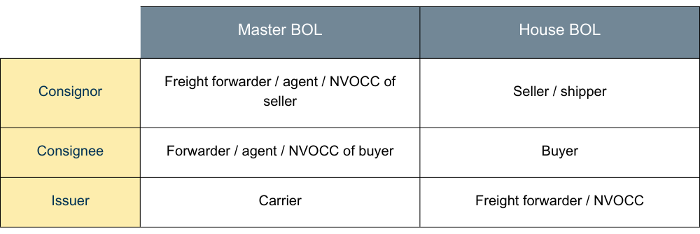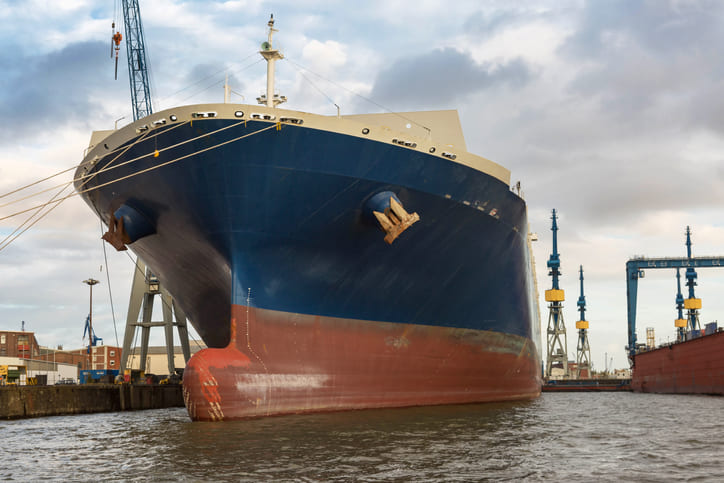Share this post
Bill of lading: Why is it important in shipping?
There is one thing every shipment transported by sea has in common.
Can you guess what it is?
If you guessed a bill of lading, you’re right!
A bill of lading (B/L or BOL) is one of the most important shipping documents you’ll need to transport any kind of shipment. You won’t be able to make a shipment without it. A BOL is issued for all cargo transported by sea.
It acts as a legal contract of carriage between the various parties involved in the shipment — namely, the shipper, carrier and consignee.
What is a bill of lading?
It’s all in the name!
The word ‘bill’ refers to the items to be delivered and their associated costs for services carried out, and the word ‘lading’ means to load cargo onto a mode of transport (ship, plane, truck or train).
In the transportation process, a BOL serves as a record detailing all parties involved. It includes key information, such as:
BOL and booking number
Consignee's name and address
Country and point of origin
Domestic routing/exporting instructions
Export references
Exporter/shipper's name and address
Forwarding agent
Mode of initial carriage
Notify party's name and address
Place of initial receipt
Place of delivery by carrier
Port of loading
Type of cargo shipped
Vessel name
A BOL is a legally binding shipping contract that’s mandatory to import or export any goods.
It states the terms and conditions of carriage, including the carrier’s limited liability. That’s a significant point to note and why insurance is critical to mitigating the risk of a financial loss in if there’s an incident.
The contract puts the responsibility on the carrier to transport goods to the location stated in the BOL and only to release the goods to the consignee listed in the document.
The purpose of a bill of lading
The purpose of a BOL is threefold.
It acts as a legal contract that lays out the terms and conditions of the carriage, as mentioned, including incoterms®. A BOLalso serves as evidence of the shipment; and the consignee must keep it for legal (customs) purposes.
It acts as a title to the goods once they’ve reached their destination. Only the named consignee may receive these goods and can ‘release’ the cargo to receive them.
It’s a receipt of goods that are being shipped.
The various types of bills of lading represent differences in:
Issuers.
Purpose.
Buyer-seller relationship.
Levels of buyer protection.
When we talk about a BOL, it’s usually a house bill of lading (HBL) or a master bill of lading (MBL).
An MBL (sometimes referred to as an original bill of lading) is created and issued by the actual carrier/shipping line of a shipment.
An HBL is created and issued by a freight forwarder or NVOCC, like Hillebrand Gori. In both cases, the consignor is the supplier, and the consignee is the buyer.
Confused about who handles the shipment at each stage of the journey? Read this.

Who pays for the bill of lading?
The party responsible for paying for the bill of lading varies depending on the contract terms between the buyer and seller.
In most cases, the shipper (seller) supplies and pays for the BOL, as it acts as a receipt and title to the goods. But if specific arrangements exist between the parties, such as a free on board (FOB) contract, the buyer may be responsible for obtaining and paying for the BOL.
Both parties should clearly outline their responsibilities in their contract to avoid any confusion or disputes.
Who keeps the bill of lading?
The carrier or driver typically receives the bill of lading upon pickup.
Shippers keep a copy of the BOL once the shipment departs the port of origin in case of any damage or loss of the products during transit. This can be evidence for filing claims with the carrier or insurance company.
Need more information?
Want to know more about bills of lading or need help with shipping documentation?
Get in touch with us, and we’ll be happy to assist you.
Published 11th January 2023, updated 9th February 2024
Yes, but it'll require the issuance of a new BOL with the correct information. Confirm the cancellation of the old BOL with your carrier or freight forwarder to avoid any complications.
It's becoming more common for carriers and shippers to use electronic BOL. Ensure that all parties involved accept this form of documentation. Some countries may have certain regulations regarding the use of electronic BOL.
In case of a lost or destroyed bill of lading, the carrier may require additional documentation to release the cargo. This can include a written statement of loss, a commercial invoice, and other relevant documents. It's important to keep copies of all shipping documents to avoid delays in customs clearance.
A negotiable BOL, commonly used in commercial transactions, is a document you can legally transfer to another party. Governed by specific laws and regulations, it provides the shipper or holder legal protection.
How can we help your business grow?

.png?sfvrsn=ee3a7866_1)



